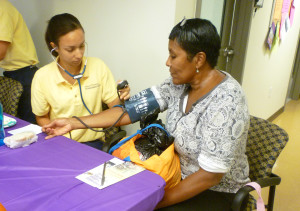Addressing the Needs of an Older Population
Severe winter weather has many cities, organizations and citizens working hard to provide services for homeless individuals who may not have a warm place to go. Homelessness takes a serious toll on a person’s physical, mental and emotional health, and winter conditions can increase health risks – especially for anyone who must live on the streets.
Now, imagine these individuals are homeless, unsheltered and dealing with all of the physical ailments that come with middle age. Across the country, the demographics of individuals who experience homelessness have been changing. An article in the Huffington Post states that currently “half of America’s homeless are over 50.” This is an astonishing increase compared to the 1990s, when around 11 percent of the adult homeless population was over 50.
There are many different factors that can contribute to homelessness occurring later in life, including long histories of drug and alcohol addiction and mental illness. In some cases, though, homelessness can be the result of losing a job and not being able to keep up with housing costs. This is especially relevant in cities like DC that have a high cost of living.
 Women at Calvary Women’s Services tend to fall into this age bracket. Calvary’s programs are specifically designed to meet the needs of women dealing with chronic health problems such as heart disease, diabetes, high blood pressure and general aches and pains. Women are connected to doctors and, if necessary, receive medications to help manage their health issues. Volunteer health professionals regularly lead classes on topics that matter to older women like menopause and breast health. Beyond physical concerns, women at Calvary also have the space to focus on their mental well-being in individual and group therapy.
Women at Calvary Women’s Services tend to fall into this age bracket. Calvary’s programs are specifically designed to meet the needs of women dealing with chronic health problems such as heart disease, diabetes, high blood pressure and general aches and pains. Women are connected to doctors and, if necessary, receive medications to help manage their health issues. Volunteer health professionals regularly lead classes on topics that matter to older women like menopause and breast health. Beyond physical concerns, women at Calvary also have the space to focus on their mental well-being in individual and group therapy.
These and other types of health services are critical for individuals who have lost the resources to care for themselves.